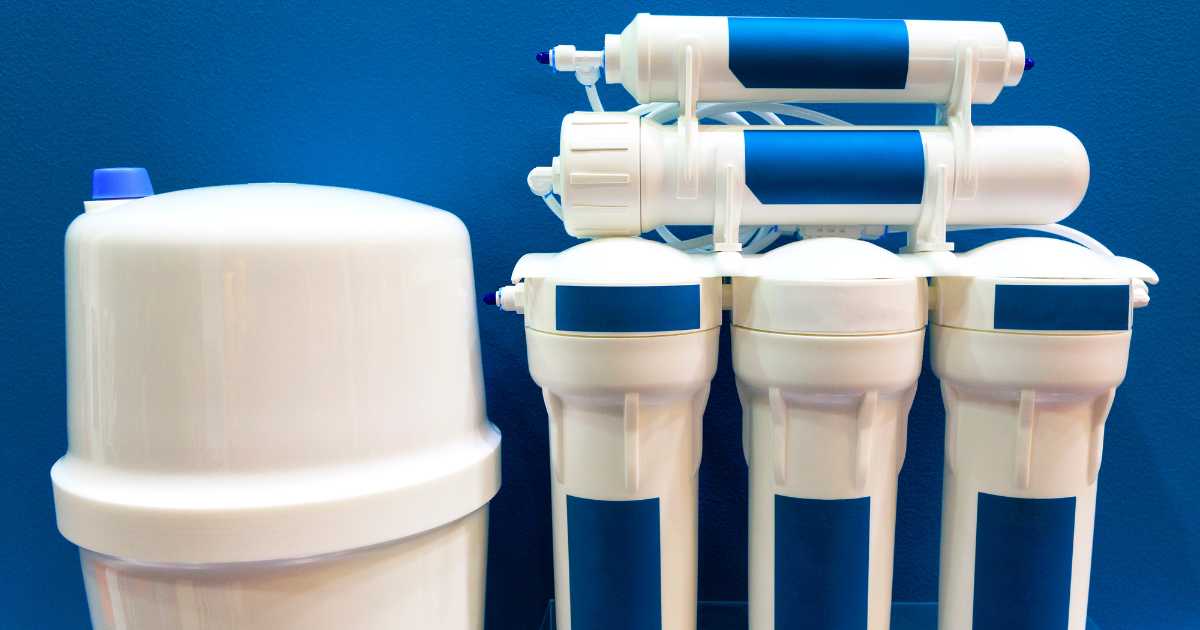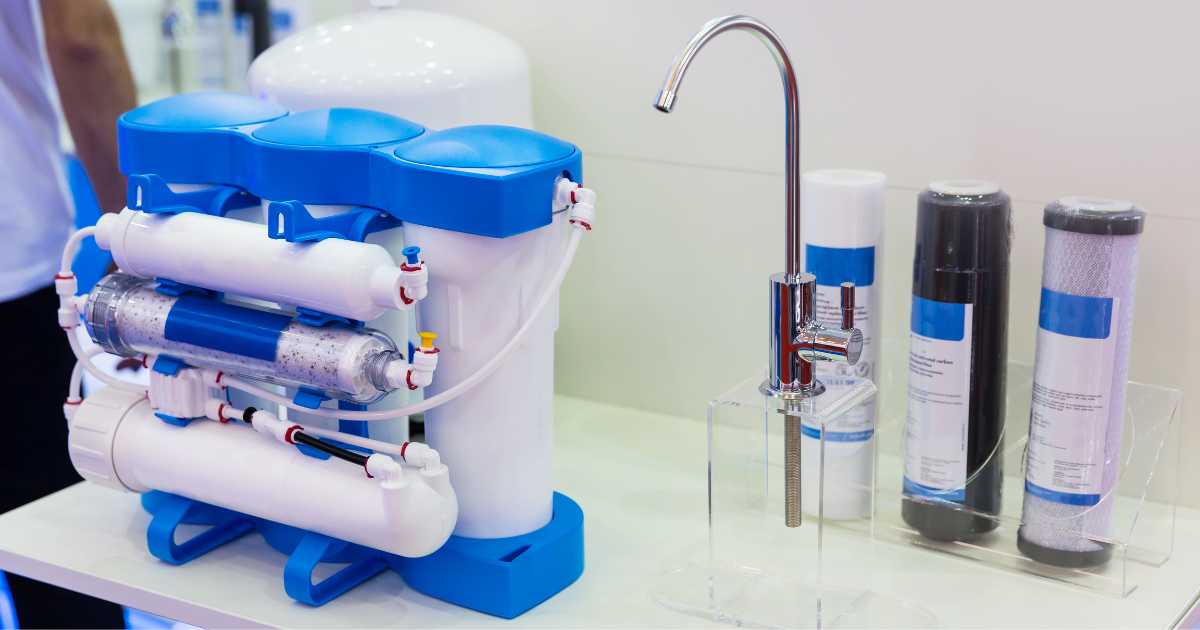We like to share product recommendations with you and hope you like them! Just to make you aware Water Filter Data may collect a small share of sales or other compensation from the links on this page.
Reverse osmosis water has some notable benefits, including a high decontamination rate, natural cleanliness, and better taste!
Water is an indispensable part of our daily lives. We use water for many things and therefore our water supply must be clean, and there are different ways to achieve this.
There are various water-purifying mechanisms, from carbon filters to chemical sterilizers and more that help to clean water. Our mechanism of interest in this article is reverse osmosis, one of the leading water-purifying technologies.
There are questions about the safety of reverse osmosis systems, and we’re here to clear all doubt. We’ll examine reverse osmosis water benefits, explanations, and expected drawbacks.
What is Reverse Osmosis?

Technology is rapidly advancing, and it takes a lot to keep up. The reverse osmosis system of water purification is a new technology, and it’s okay not to know much about it. Let’s try to clarify how this system works before discussing the pros and cons.
Reverse osmosis is a purification system that uses a semi-permeable membrane to filter water. This semi-permeable membrane limits the molecules that pass through, eliminating debris and small contaminants.
The reverse osmosis process works inversely to regular osmosis, as the name suggests. To make things easier for you, we’ll explain how osmosis works first, then compare it to our system of interest.
Osmosis
Osmosis is a phenomenon where particles move from one point to another through a semi-permeable membrane and in the direction of a concentration gradient. A concentration gradient refers to a difference in concentration between systems, for example, salt water and normal water.
Saltwater has a higher concentration than normal water. If salt water and regular water are placed in a system separated by a semi-permeable membrane, the regular water molecules will flow toward the salt water due to the difference in concentration.
In osmosis, the molecules go from the region of lower concentration to the region with a higher concentration, and there’s no need for energy.
Reverse Osmosis
In reverse osmosis, the inverse of osmosis is achieved – molecules move from a region of higher concentration to a lower concentration. An external force is required in this process because it moves against the concentration gradient.
Pressure is applied to contaminated water with a higher concentration and forced through a semi-permeable membrane that only allows water molecules through. This filtration process is very effective and gives water a high percentage of purity. The reverse osmosis filter is a semi-permeable membrane.
Reverse Osmosis Water Benefits

Reverse osmosis has many benefits. Here are a few:
Effective Against Contaminants
Reverse osmosis (RO) has a high decontamination rate. The mechanism behind reverse osmosis filtration is infallible, except if there’s a problem with the semi-permeable membrane.
Water is forced through the membrane at high pressure, and the membrane has tiny pores. Particles larger than these pores are filtered out, while smaller molecules like water pass through.
It’s impossible for molecules larger than the membrane pores to pass through, which is why it is effective. Some chemical contaminants eliminated through this process include sodium, sulfate, mercury, lead, arsenic, fluoride, chloride, lead, and more.
In addition to removing mineral contaminants, RO systems are also effective against harmful contaminants such as bacteria, fungi, and viruses.
Energy Efficiency
In a world where global warming, carbon footprints, and other environmental vices are at an all-time high, using a reverse osmosis system reduces energy wastage.
You don’t need any form of electricity to power your RO system. Reverse osmosis operates with pressure, which occurs naturally in your water circulation. Compared to other forms of decontamination, like distillation, RO is a better choice.
Constant Clean Water
The reverse osmosis system is installed in your home’s water circulation, ensuring purified water constantly flows from your tap. You will always have access to fresh water, irrespective of the application.
You don’t need to start boiling water or get involved in any other filtration process. The reverse osmosis system ensures drinkable water is always following from your tap. It saves you a lot of stress and saves energy.
No Water Softener Needed
Most of the city’s water source contains one or more minerals. These minerals can form aggregations in our pipes or contaminate our food. We usually treat water with softeners to eliminate these minerals, which will cost more.
A reverse osmosis water system is highly effective in filtering minerals as well. The mineral particles are larger than the membrane’s pores and are filtered out effectively. You don’t need a softener if you’re using a reverse osmosis system.
You also don’t have to worry about scum forming whenever you boil water. The minerals responsible for forming scum (hard water) are already filtered.
Cost Effective
If you take the time to calculate it, you’ll realize you can spend a lot on drinking water. Since some people don’t trust the water supply in their homes, they tend to spend a lot more on bottled water and other sealed products.
Reverse osmosis water filtration eliminates the need to buy water. The system provides us with a constant supply of clean water, which we can easily pour into bottles and store in the fridge. There is no need to waste money on single-use water bottles.
Better Taste And Cooking Experience
Unfiltered water contains different particles that can negatively affect taste and smell. If this water is used for cooking, it can affect your food’s taste and overall quality.
A reverse osmosis system effectively eliminates all contaminants, leaving clear, better-tasting, and odorless water. The RO system will give your food a better taste and also provide you with clean drinking water for your beverage.
Drawbacks of Reverse Osmosis
Using reverse osmosis has some drawbacks, especially if you have just started using it. Here are a few things you should consider:
Taste
You may need to adjust to the taste if you use the reverse osmosis system for the first time. The reverse osmosis system removes most impurities that other filtration methods can’t, which leaves a particular taste.
The water tastes bland because it is demineralized and may take some getting used to.
Maintenance
This is not much of a drawback because there’s hardly any system that doesn’t require maintenance. However, you do need to check your reverse osmosis system once or twice a year.
Conclusion
The reverse osmosis system of water filtration is highly recommended. It uses a semi-permeable membrane and water pressure to filter out all particles, including minerals and microbes. Any healthy minerals removed during RO filtration are available from several other sources.
We’ve explained how reverse osmosis works and discussed the reverse osmosis water benefits and drawbacks. If you’re wondering if you should get one, this post should help you decide. Learn more about your water filter needs here.



